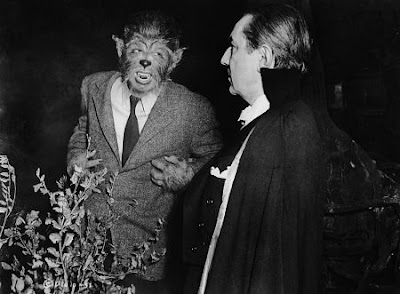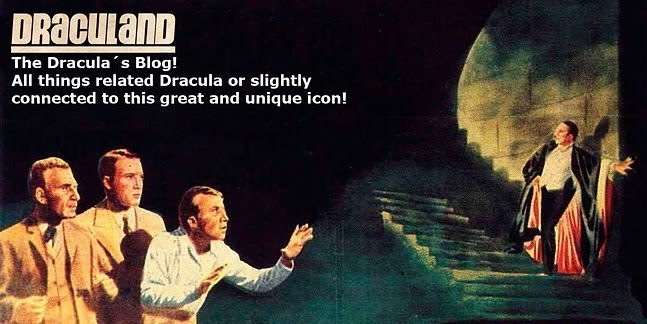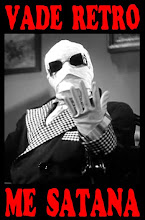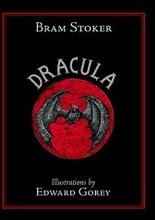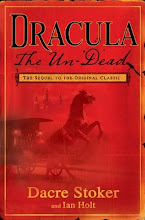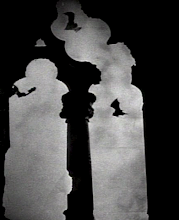 CAPSULE
CAPSULE: This has been a very rare film, but it seems to be
becoming more readily available. This is not a sequel to, but
a simplification of Bram Stoker's novel. It just replaces the
London backdrop with Istanbul and sets the story in the year
of its production, 1953. The film has some nice bits on a tight
budget, but turning the Mina character into an alluring stage
dancer somehow cheapens the story. Atif Kaptan makes what
seems a lack-luster Dracula, but perhaps if I knew Turkish it
might have been more impressive.

As someone who was interested early on in horror films and
not long after that in the long history of the horror film, I had
a large number of titles of films I wanted to see some day.
Most I was able to see as a teen or at least by my twenties.
But there are some lost horror films and some that are just too
obscure to ever find. I had considered the Edison version of
FRANKENSTEIN one such lost film, but I eventually got a chance
to see and
review.

Nearly as rare was the Turkish version of Dracula, Mehmet
Muhtar's DRAKULA ISTANBUL'DA or DRACULA IN ISTANBUL.
This was a 1953 version--not a sequel--of the Bram Stoker
story. In this version Dracula comes to prey on Istanbul. At
first that change of setting seems strange, but NOSFERATU
and DRACULA (HORROR OF DRACULA) did bring Dracula to
Germany. This was only the third film version of the novel.
Actually Dracula was only one of several well-known figures
who were brought to Istanbul in Turkish films. There was
TARZAN IN ISTANBUL (1952), THE INVISIBLE MAN IN ISTANBUL
(1955), THE UFOS IN ISTANBUL (1955) (if a UFO can be
considered a well-known figure), and in 1967 there was the
Turkish FANTOMAS: APPOINTMENT IN ISTANBUL.

One might think that setting the latter part of DRACULA in
Istanbul would create a problem. Bram Stoker's Dracula is all
caught up in the Christian tradition. The vampire is repelled
by the cross, by holy wafers, and by holy water. Well, actually
the problems had already been worked out. In 1928 Ali Riza
Seyfi wrote a novel KAZIKLI VOYVODA (or VLAD THE IMPALER)
which was mostly just a translation of DRACULA, though the
action does not move to England but to Istanbul. Seyfi had
already worked out how much of the vampirism translated to
a mostly Muslim country. The holy wafers and holy water were
left out. Crosses became portable copies of the Koran which
repelled Dracula. Seyfi's intent was to play up Bram Stoker's
having Dracula the vampire be the still-living remains of Vlad
Tepes, also known as Vlad the Impaler. After all, whom did
the real historical figure Vlad impale? It was Turkish invaders
into his country. Turks have a special historical reason to
hate Dracula.

The film DRAKULA ISTANBUL'DA is based on both the Stoker
novel and the Seyfi novel. And because the two novels are so
similar, probably even Ümit Deniz, the writer of the film, did
not know what parts he was taking from either. The script is
really a much-shortened version of the story most people
know well.

After the film was released in 1953 it disappeared for many
years, as films frequently did in those days. It was just an
unavailable film that people like me wished to see but never
really expected to see. I thought it was a lost film like LONDON
AFTER MIDNIGHT. Apparently eventually it did make it to
Turkish television and eventually could be seen in various ways
in this country. I saw it under less than ideal conditions. It was
in Turkish without subtitles and the aspect ratio was wrong. I
do not know Turkish. But seeing this film is like seeing an opera
on the stage. I may not know exactly what is being said at each
instant, but I know the story well enough to have a rough idea
of what was going on.

Is this film an accurate film adaptation of DRACULA? Well,
NOSFERATU and the 1931 version of DRACULA did not set the
fidelity bar very high. DRAKULA ISTANBUL'DA was the most
accurate adaptation up to its time. Five years later Terence Fisher
would make DRACULA (United States title: HORROR OF DRACULA)
and I would say the two are on a par for closeness to the novel.
Neither was exactly right and each was much simplified. Still, this
book has never been really well adapted to cinema. I would say
the most accurate versions made to date were COUNT DRACULA,
the 1977 BBC/PBS version with Louis Jordan, and Francis Ford
Coppola's 1992 DRACULA, though each took liberties. Orson
Welles also did a fairly accurate radio version for the premiere
of his Mercury Theater radio program.
Go to
http://www.mercurytheatre.info for all his Mercury Theater
programs online.

DRAKULA ISTANBUL'DA updates its story and moves the story to
Istanbul. That is two strikes against it. It also removes an entire
insane asylum, Dr. Seward, Renfield, and a host of other characters.
Mina is no longer the delicate flower of a girl she is in the book but
a somewhat sensual stage dancer. She is less innocent, so does not
create so much concern for her situation. There are two production
numbers showing her on the stage, one has her as a Latin hottie
and the other as a tastefully covered Turkish belly dancer. The
musical production numbers in a horror film may have been
inspired by THE PHANTOM OF THE OPERA (1943).

There are little economies throughout the production. My wife
pointed out how many scenes had Jonathan Harker in one hallway
of Dracula's castle and how easy that made camera setups. (By the
way, the character names are all Turkish and nothing like what they
are in the novel with the exception of Drakula. For example Mina
becomes Guzin. To save explaining I will use the names of their
antecedents in the novel.) Dracula has only one bride and one
servant. The latter is of dubious loyalty and seems more
sympathetic to Harker than to Dracula.
The score has odd touches including at bit of "April in Paris." The
composer, whoever he is, seems to be frequently at cross- purposes
with the director. Times when the film should be creating an aura of
fear, instead the score has an air that is light and comical.

Visually the film is a mixed bag. Clearly it was made on a low
budget. But it has atmosphere. The credit sequences take a cue
from what might be Universal horror films. The American studio
would frequently some touch like smoke congealing into the letters
of the opening titles. For this film the opening credits seem to roll
out like a scroll on invisible paper across the screen. Dracula has
sleeping gas piped to some of the rooms of his castle and in one
room is comes out like smoke from the eyes of a painting creating
a bizarre image. Staking scenes take place with most of the gory
action off camera. Dracula's castle, really an unconvincing drawing,
is wrong for eastern European castles. I think of them as having
conical turrets like Castle Bran does in Transylvania. The castle
we see in the film has open turrets like we would expect to see
in a King Arthur movie (or on the sorts of castles built by the
Crusaders in Turkey).

Mina does not look particularly Turkish and she is played by Annie
Ball, which does not sound like a Turkish name. Nevertheless
Ms. Ball seems to have made a career in Turkish films. Atif Kaptan
who plays Dracula apparently had appeared in other macabre roles.
He is a slight letdown as the King of Vampires. It might have been
different if I could understand what he was saying, but he just
looks like a distinguished gray- haired gentleman without
particularly striking looks. Dracula appears to have fangs that
grow when he needs to use them. It has been claimed that this
was the first film to put fangs on a vampire. Not true. NOSFERATU
had fangs, but they were two front teeth and not retractable. One
effect that does not work well any more is that Dracula appears in
a flash. Basically it is the effect that goes back to George Melies
of just stopping the camera, having the character walk into its
view, and start filming again. There is a nice scene of Dracula's
face when he is in the form of a bat.

In a sequence taken from Bram Stoker, Dracula crawls down the
wall of his castle, a disquieting scene. COUNT DRACULA (1977)
usually gets credit for having shown this sequence for the first
time. However, it appears earlier both in this film and in SCARS OF
DRACULA (1970). The film plays up his bat-like characteristics.
As a human he wears a cape that gives him a bat-like look.
Dracula can transform into a bat, but for some reason he does not
toward the end when he is being chased on foot. This mistake leads
to his downfall. The age-old vampire is something of an esthete and
he hypnotizes Mina to have her dance for him. Also unorthodox for
portrayals of Dracula is that when he wants to disable an opponent
and just socks him. I suppose Buffy vampires kickbox, but for some
reason I just do not think of Dracula as ever having to deliver a
roundhouse punch.

I decline to rate the film since I feel only somebody who knows
what the actors are saying should have that privilege. Overall, I
did not care for the updating. But I was willing to overlook most
of the film's other weaknesses. It had enough strengths to make
watching it, even under poor condition, a real pleasure. I hope
that now that the film has been re-discovered that some
entrepreneur will decide it is worth subtitling and putting on
DVD. Was it worth the wait to find this film? Well, probably not.
But now that it is becoming available it is worth seeking out.
Mark R. Leeper
mleeper@optonline.net
Copyright 2007 Mark R. Leeper
Fonts:
Mark R. Leeper





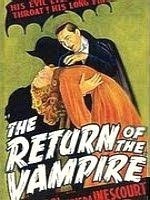.jpg)





